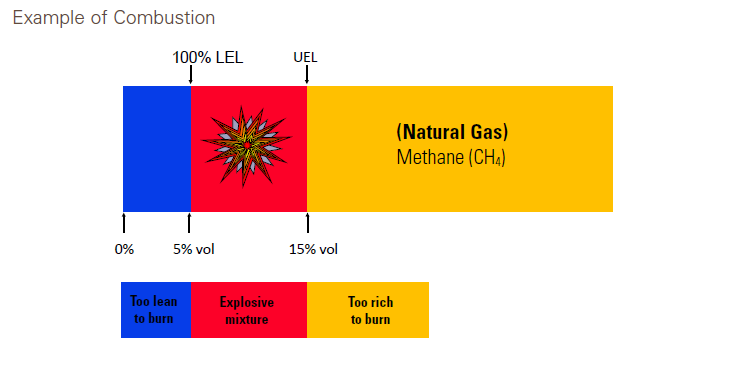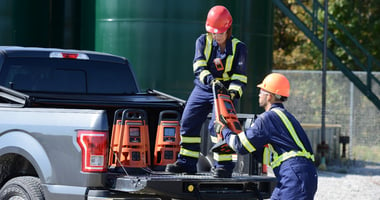What is a Combustible Gas?
Combustible gas is a substance that can ignite in the presence of an ignition source, whether in air or oxygen. Hydrogen, methane, propane, and iso-butane are some of the most common examples of combustible gases. These gases can cause catastrophic gas explosion accidents when mixed with a certain amount of oxygen.
LEL Meaning - What is LEL and UEL?
To prevent catastrophic gas explosions, it's important to know the Lower Explosion Limit (LEL) and Upper Explosion Limit (UEL) of combustible gases. The LEL is the lowest concentration of gas mixed with air that can ignite, while the UEL is the highest concentration. A reliable combustible gas detector should be used in areas where gas is present to trigger an alarm before the LEL is exceeded and activate safety measures like shutting off the gas supply and adding ventilation.
What is Combustible vs. Flammable Gas?
In the world of flammable and combustible liquids, the National Fire Protection Association is the standard-bearer. According to its Flammable and Combustible Liquids Code, liquids with a flashpoint below 100°F (37.8°C) are classified as flammable, while those with a flashpoint above 100°F are considered combustible. It's worth noting that OSHA has moved towards the Globally Harmonized System (GHS) of classification, and removed the term "combustible" from its standard 29 CFR 1910.106 in 2015. As a result, all liquids with a flashpoint lower than 199.4°F (93°C) are now classified as flammable.
What Makes a Gas Combustible?
Combustion is the process by which a substance reacts with oxygen from the air, releasing energy in the form of heat and light. When liquid vapors or gases exceed the flashpoint, which is the minimum temperature required for them to ignite in the air, they become combustible and can cause an explosion. To ensure safety, it is crucial to have an accurate detection system in place that can monitor the levels of combustible gases in the air. Since these gases have different densities, some being heavier and others lighter than air, it is important to place your combustible gas detectors accordingly in your facility.
Download the Lower Explosive Limits (LEL) of Combustible Gases chart to see the ammonia LEL, hydrogen LEL, methane LEL, and more.
The following are the lower explosive limits (LEL) of selected gases
|
The following are the lower explosive limits (LEL) of selected gases |
|||
|
Acetone |
2.5% vol |
Hexane |
1.1% vol |
|
Acetylene |
2.5% vol |
4.0% vol |
|
|
15.0% vol |
Isopropyl Alcohol (Isopropanol) |
2.0% vol |
|
|
Benzene |
1.2% vol |
5.0% vol |
|
|
Butane |
1.9% vol |
Methyl Alcohol (Methanol) |
6.0% vol |
|
Butyl Alcohol (Butanol) |
1.4% vol |
Methyl Ethyl Ketone |
1.4% vol |
|
12.5% vol |
nPentane |
1.4% vol |
|
|
Diethyl Ether |
1.9% vol |
Propane |
2.1% vol |
|
Ethane |
3.0% vol |
Propylene |
2.0% vol |
|
Ethyl Alcohol (Ethanol) - |
3.3% vol |
Styrene |
0.9% vol |
|
Ethylene |
2.7% vol |
Toluene |
1.1% vol |
|
Ethylene Oxide |
2.7% vol |
Xylene |
1.1% vol |


Download the Lower Explosive Limits (LEL) of Combustible Gases chart to see the ammonia LEL, hydrogen LEL, methane LEL, and more.
Need help?
If you need any assistance or have any questions, please do not hesitate to contact our dedicated Customer Success team.



